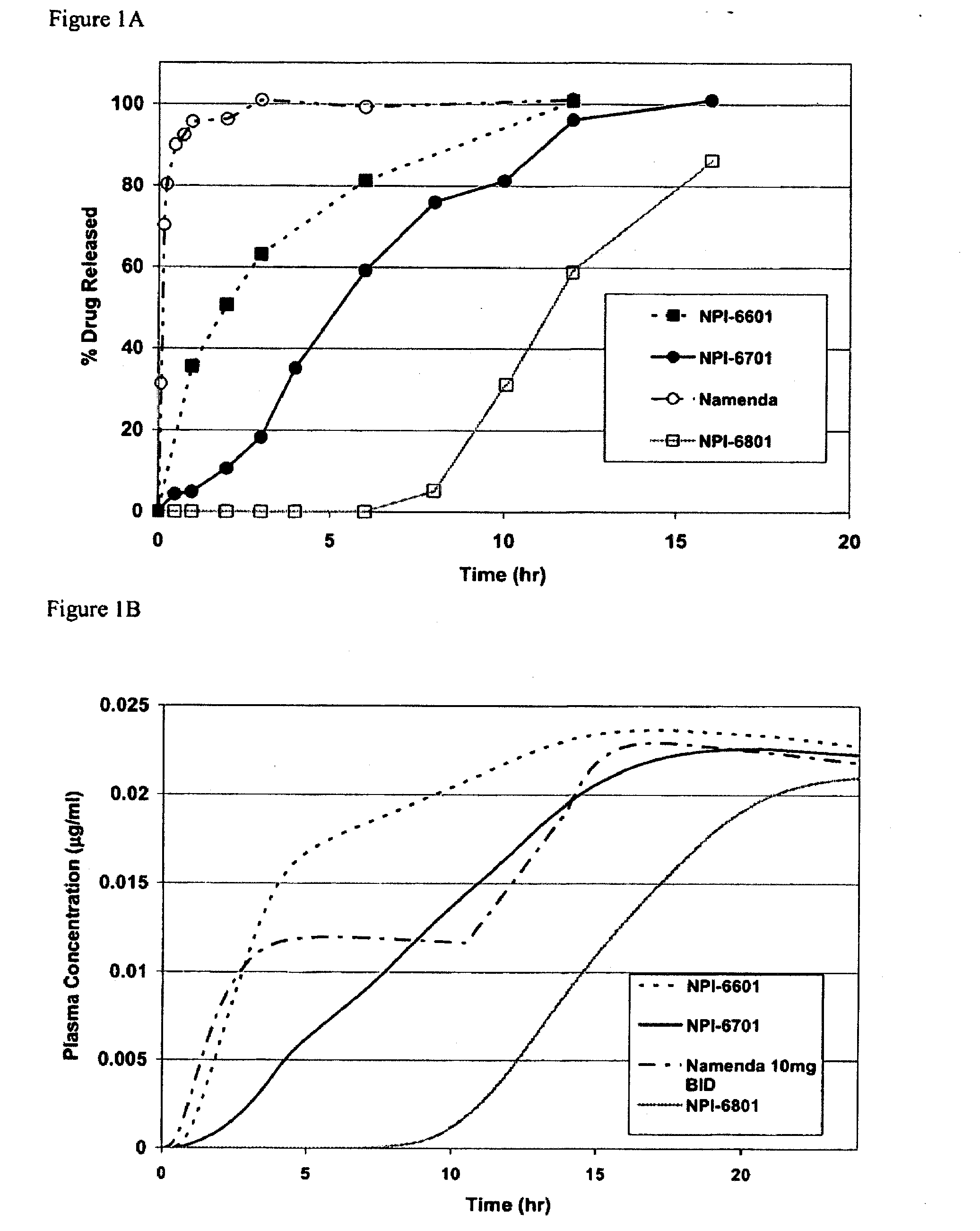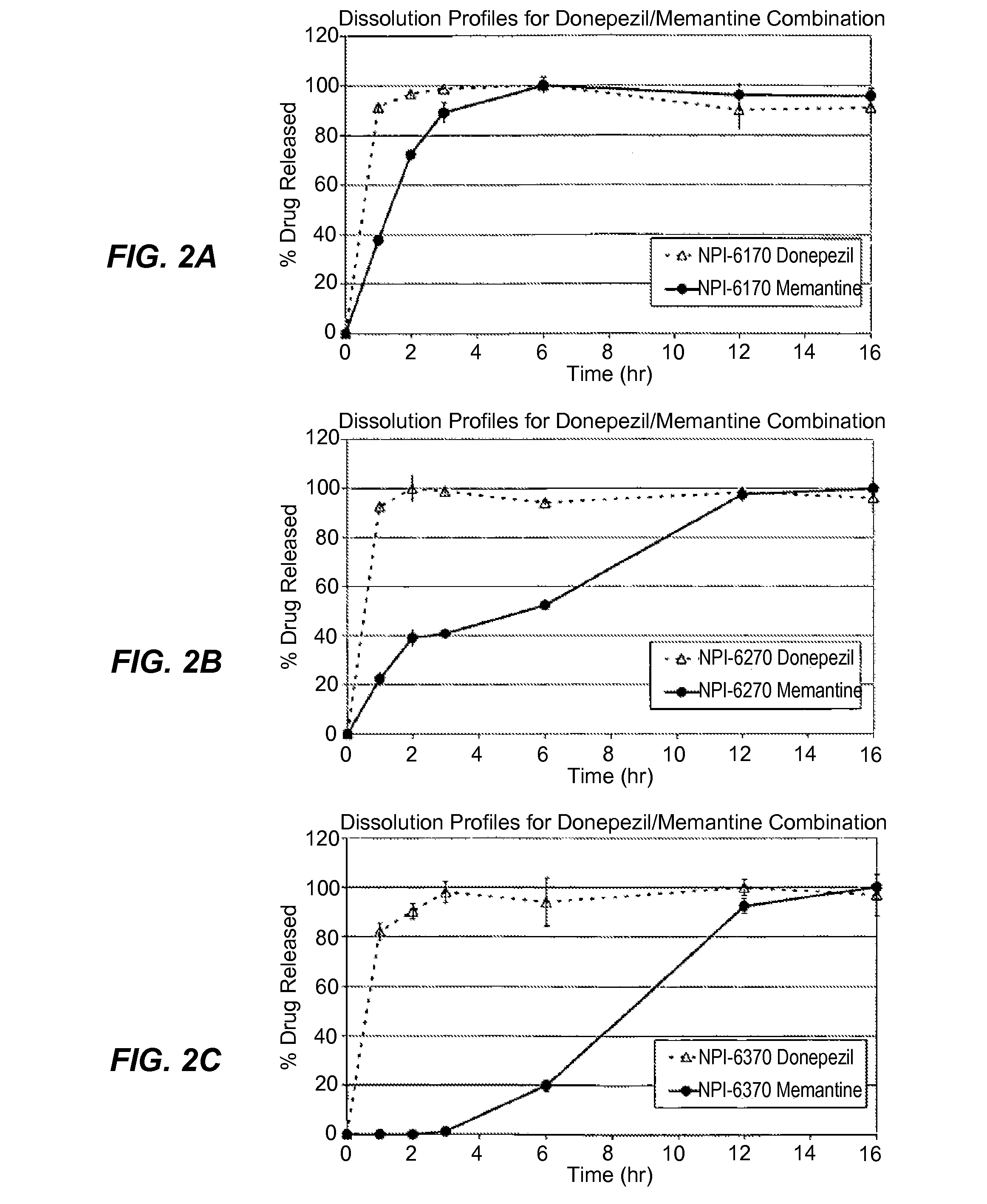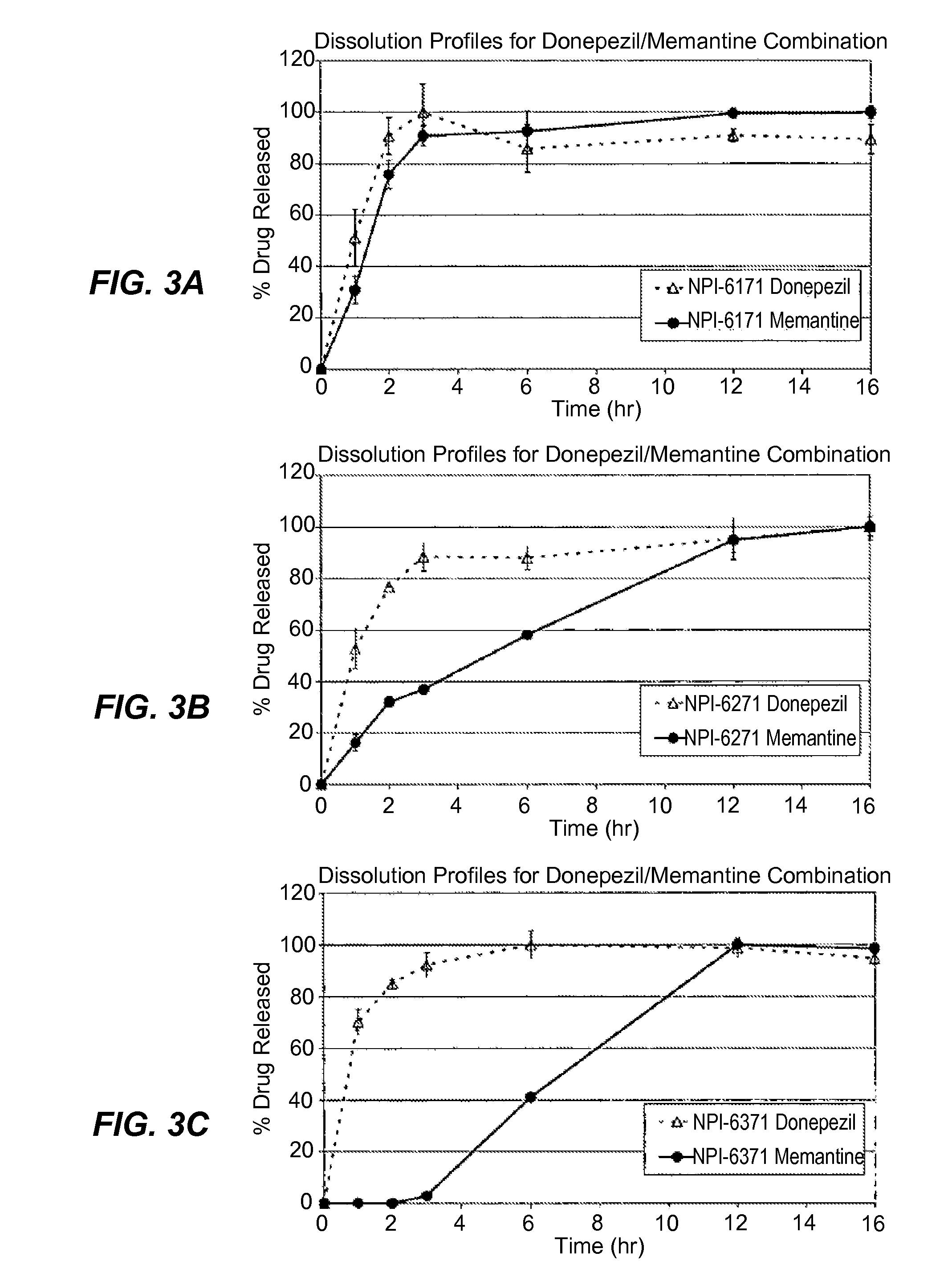Methods and Compositions for the Treatment of CNS-Related Conditions
a technology of cns and compositions, applied in the field of methods and compositions for treating cns-related conditions, can solve the problems of not being able to achieve adequate patient compliance, providing the release of nmdar antagonists, and not being able to address the problem of combined therapy when present, so as to minimize the relative variability of active agents, reduce or even minimize the variation of cratio, and minimize the effect of cratio
- Summary
- Abstract
- Description
- Claims
- Application Information
AI Technical Summary
Benefits of technology
Problems solved by technology
Method used
Image
Examples
example 1
In vivo Method for Determining Optimal Steady-State Concentration Ratio (Cratio,Ss)
[0102]A dose ranging study is performed using, for example, the dementia model (APP23 mouse model described by Van Dam et al. (See Psychopharmacology 2005, 180(1):177-190), or the Tg2576 model described by Dong et al (Psychopharmacology 2005, 181(1):145-152). An isobolic experiment ensues in which the drugs are combined in fractions of their EDXXs to add up to ED 100 (e.g., ED50:ED50 or ED25:ED75). The plot of the data is constructed. The experiment points that lie below the straight line between the ED50 points on the graph are indicative of synergy, points on the line are indicative of additive effects, and points above the line are indicative of inhibitory effects. The point of maximum deviation from the isobolic line is the optimal ratio. This is the optimal steady state ratio (Cratio,ss) and is adjusted based upon the agents half-life. Similar protocols may be applied in a wide variety of validat...
example 2
Combinations of an NMDAr Antagonist and an ACheI
[0103]Representative combination ranges and ratios are provided below for compositions of the invention. The ranges given in Table 3 are based on the formulation strategies described herein.
TABLE 3Adult Dosage and Ratios for Combination TherapyAcheI Quantity, mg / day / ACheI:NMDA Ratio Range)NMDA drugDonepezil / Rivastigmine / Galantmine / Tacrine / mg / dayARICEPT ®EXELON ®REMINYL ®COGNEX ®Huperzine-AMetrifonateMemantine / 1-201-243-488-1600.02-0.88-802.5-80(0.012-8) (0.012-9.6) (0.038-19) (0.1-64) (0.0025-0.32) (0.1-32) Amantadine / 1-201-243-488-1600.02-0.88-80 50-400(0.0025-0.4) (0.0025-0.48) (0.0075-0.96) (0.02-3.2) (0.0005-0.016)(0.02-1.6) Rimantadine / 1-201-243-488-1600.02-0.88-80 50-200(0.005-0.4) (0.005-0.48) (0.015-0.96) (0.04-3.2) (0.0001-0.016)(0.04-1.6)
example 3
Release Profile of Memantine and Galantamine
[0104]Release proportions are shown in Table 4 below for a combination of memantine and galantamine. The cumulative fraction is the amount of drug substance released from the formulation matrix to the serum or gut environment (e.g., U.S. Pat. No. 4,839,177) or as measured with a USP II Paddle system using water as the dissolution medium.
TABLE 4Release profile of memantine and donepezilMEMANTINEGALANTAMINET½ = 60 hrsT½ = 7 hrsTimecum. fraction Acum. fraction B10.20.220.30.340.40.480.50.5120.60.6160.70.7200.80.8240.91.0
PUM
| Property | Measurement | Unit |
|---|---|---|
| thickness | aaaaa | aaaaa |
| temperature | aaaaa | aaaaa |
| pharmaceutical composition | aaaaa | aaaaa |
Abstract
Description
Claims
Application Information
 Login to View More
Login to View More - R&D
- Intellectual Property
- Life Sciences
- Materials
- Tech Scout
- Unparalleled Data Quality
- Higher Quality Content
- 60% Fewer Hallucinations
Browse by: Latest US Patents, China's latest patents, Technical Efficacy Thesaurus, Application Domain, Technology Topic, Popular Technical Reports.
© 2025 PatSnap. All rights reserved.Legal|Privacy policy|Modern Slavery Act Transparency Statement|Sitemap|About US| Contact US: help@patsnap.com



